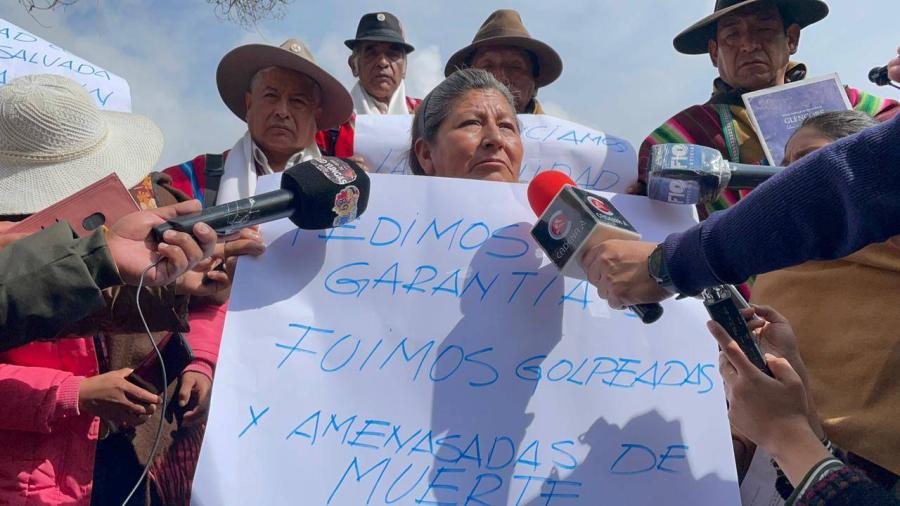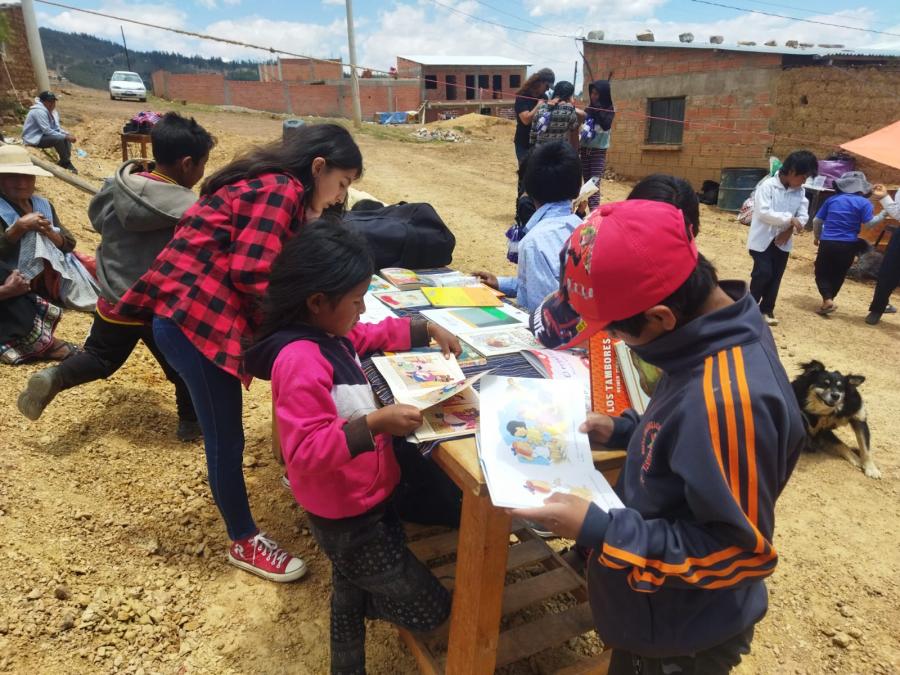To live and die with the land is to know its rules. When there is no hospital at the other end of the telephone and no grocery store at the end of the street, when there is no biweekly paycheck nor microwave oven, when there is nothing to fall back on but nature itself, then a society must discover the secrets of the plants and animals. Thus indigenous peoples possess extensive and intensive knowledge of the natural world. In every place where humans have existed, people have received this knowledge from their elders and taught it to their children, along with what has been newly acquired.
The richness of knowledge accumulated in the cultures of indigenous peoples of Latin America has come to light in the Western world through elegant anthropological work by Brent Berlin, Janis Alcorn, William Balee, and Darrell Posey, among others. These same scholars have often led the fight to save this knowledge and the cultures that embody it.
I strongly support the study of indigenous knowledge and the efforts to preserve native cultures. What concerns me is that some investigators justify their work in terms of its relevance to development projects, in effect placing dollar values on indigenous knowledge. If you justify the investigation of indigenous knowledge on economic grounds and your argument is refuted, or your calculations are shown to be inflated, then you have lost the argument, the funding, and potentially the Indian land as well. I have the same concern about shortsighted arguments of biologists who "sell" biodiversity by urging the preservation of plant and animal species on the basis of their potential for yielding useful products.
The European Ideal
The economic argument for the investigation of indigenous cultures has its roots in the myth of the noble savage. In its first incarnation, the noble savage was a shorthand term for the idealized European vision of the inhabitants of the New World. Early chroniclers noted that among the Indians "the land belonged to all, just like the sun and water. Mine and thine, the seeds of all evils, do not exist for those people... They live in a golden age,... in open gardens, without laws or books, without judges, and they naturally follow goodness." Jean-Jacques Rousseau, Thomas More, and others idealized the naked "savages" as innocent of sin. Another chronicler, continuing in this vein, observed that "all are equal in every respect, and so in harmony with their surroundings that they all live justly and in conformity with the laws of nature." For many Europeans, these Indians were dwellers in an earthly Garden of Eden.
It is the latter idea, that Indians lived in conformity with nature, that inspired this century's reincarnation of the noble savage. Writings of several scientists and indigenous rights advocates echo the early chroniclers' assumption that indigenous people lived in "balance" with their environment. Prominent conservationists have stated that in the past, indigenous people "lived in close harmony with their local environment." The rhetoric of Indian spokespersons is even stronger: "In the world of today there are two systems, two different irreconcilable `ways of life.' The Indian world - collective, communal, human respectful of nature, and wise - and the western world - greedy, destructive, individualist, and enemy of nature" (from a report to the International NGO Conference on Indigenous Peoples and the Land, 1981). The idealized figure of centuries past had been reborn, as the ecologically noble savage.
The recently accumulated evidence, however, refutes this concept of ecological nobility. Precontact Indians were not "ecosystem men"; they were not just another species of animal, largely incapable of altering the environment, who therefore lived within the "ecological limitations of their home area." Paleobiologists, archaeologists, and botanists are coming to believe that most tropical forests have been severely altered by human activities before European contact. Evidence of vast fires in the northern Amazonian forests and of the apparently anthropogenic origins of large areas of forest in eastern Amazonial suggests that before 1500, humans had tremendously affected the virgin forest, with ensuing impacts on plant and animal species. These people behaved as humans do now : they did whatever they had to to feed themselves and their families.
"Whatever they had to" is the key phrase in understanding the problem of the noble savage myth in its contemporary version. Countless examples make it clear that indigenous people can be either forced, seduced, or tempted into accepting new methods, new crops, and new technologies. No better example exists than the near-universal adoption of firearms for hunting by Indians in the Neotropics. Shotguns or rifles, often combined with the use of flashlights and outboard motors, change completely the interaction between human hunters and their prey.
There is no cultural barrier to the Indians' adoption of means to "improve" their lives (i.e., make them more like Western lives), even if the long-term sustainability of the resource base is threatened. These means can include the sale of timber and mining rights to indigenous lands, commercial exploitation of flora and fauna, and invitations to tourists to observe "traditional lifestyles." Indians should not be blamed for engaging in these activities. They can hardly be faulted for failing to live up to Western expectations of the noble savage. They have the same capacities, desires, and, perhaps, needs to overexploit their environment as did out European ancestors. Why shouldn't Indians have the same right to dispose of the timber on their land as the international timber companies have to sell theirs? An indigenous group responded to the siren call of the market economy in just this spirit in Brazil in 1989, when Guajajara Indians took prisoners in order to force the government Indian agency, FUNAI, to grant them permission to sell lumber from their lands.
"Inherent Superiority"?
Such observed behavior contrasts sharply with the claims made about Indian use of natural resources in the modern world. Despite evidence to the contrary, indigenous people continue to be credited with natural respect for ecology and a commitment to sustainable methods of resource sue under all circumstances. Some Indian groups, reading of the qualities attributed to them by Europeans, have begun to give themselves the same credit. In some cases, Indian spokespersons promise that adoption of "Indian ways" will solve many of the problems created by the ignorant ways of the non-Indians. In the highly publicized Chimane Forest Reserve in Amazonian Bolivia, for example, where indigenous people are protesting lumbering activities by commercial firms, a spokesperson for the Moxo Indians lays claim to some of the land stating: "We have learned to take care and maintain the ecology because we know that it guarantees our existence." The assertion that as Indians these people will be ecologically noble stewards, though unproven, is a trump card in the current world of conservation sensitivities.
The currency of the myth of ecological nobility was demonstrated again in Colombia, when the Colombian government granted Indians rights to more than half of national rain forest territory, arguing that the Indians are the people most likely to protect the biological diversity of the tropical forest. The Indians will administer the territory because, supposedly, as Indians, they will sustainably use and therefore preserve the plant and animal diversity. (Any "serious" exploitation will presumably be turned over to non-Indians, more experienced in nonsustainable resource use. The government has kept the rights to minerals and to commercial extraction of natural resources.)
The belief in the inherent superiority of indigenous resource use systems has reached its twentieth-century apogee in the argument that such systems are ideal models for development. Books, conferences, and learned editorials push the relevance of indigenous knowledge to contmporary development in the tropics. A recent World Wildlife Fund study on indigenous methods of resource use was titled "The Once and Future Resource Managers."
To be sure, several scientists have demonstrated that there are methods used by indigenous peoples that are definitely superior to those used by non-indigenous peoples living in the same habitat. These methods include polycropping, techniques to enhance soil fertility, and sustainable harvesting of forest plants. Other scientists have shown that indigenous groups possess culturally encoded mores that result in preservation of the resource base. But these documented patterns are sustainable only under conditions of low population density, abundant land, and limited involvement with a market economy.
How relevant are such methods and customs to situations where these three conditions no longer exist, as in most place in the Neotropics today? Techniques developed to satisfy subsistence needs are unlikely to work when surpluses are needed for cash. As an example, the Irapa-Yukpa Indians of western Venezuela, who traditionally moved over an extensive area in search of game and plant food, are now stationary. They raise coffee and work as seasonal laborers. The Indian hunters, who for the most part -use shotguns, have eliminated most large animals from near their villages and use much of the cash earned growing coffee or working for wages to purchase canned meat or fresh fish. As the anthropologists studying this group note, "Traditional ideology, language, and economic pursuits are rapidly being replaced by the customs and behavioral characteristics of the imposing Venezuelan rural culture." These researchers go on to suggest that what is happening to the Yukpa will soon happed to most other relatively unacculturated tribes. To believe that when confronted with market pressures, higher population densities, and increased sedentism most indigenous peoples will maintain the integrity of their traditional methods is not only to argue against the available evidence, but worse, to fall into the ideological trap that produced the ecologically noble savage.
A Mosaic of Methods
We must face the fact that in many cases, when we dream of the ecologically noble Indian whose knowledge will save us from the consequences of modern development, we dream an old dream, whose roots stretch back to the Garden of Eden and beyond. The future lies not in the discovery of a philosopher's stone long buried in the minds of tropical forest peoples, but in the slow, patient work of assembling solutions from the myriad sources scattered throughout the world.
As part of this effort, we need to learn from Indians. We need to enlist their help and modify their methods - selecting, refining, innovating what is appropriate to a given situation - in order to meet the demands of development in the Neotropics. Not to be ignored are the mestizos of caboclos, the mixed-blood peoples who for centuries have inhabited some areas of the Amazonian forests. They have already undertaken much experimentation with indigenous methods and are valuable sources of information on sustain able resource use, such as ways to harvest fish from the ecologically complex lacustrine environments.
Indigenous knowledge is tremendously important for many reasons. It reflects the accumulated wisdom of unique cultures; it echoes the experiences of groups whose survival is threatened; it offers fascinating in sights of ecological value. And occasionally, only occasionally, if offers methods that, when modified, can be of use to inhabitants, native and nonnative, in the modern Neotropics.
Article copyright Cultural Survival, Inc.


